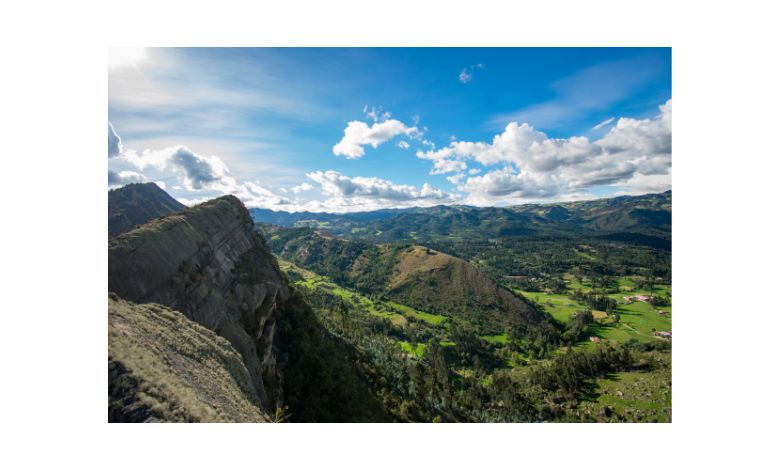Discover 5 simple ways to practice mindfulness in nature and relieve stress through calm, presence, and outdoor connection.
Not looked at. Not stepped on. Not loosely recognized as a part of the landscape.
But I truly noticed its texture, veins, how it curled a little at the edges, and how the light came through it like it was formed of stained glass. That moment didn’t happen at a therapist’s office or a meditation retreat. It happened while I was sitting under a tree, which was a point in my life when everything felt like it was falling apart.
I felt tired, burned out, and stressed out like it was a part of me. You know how it feels when your mind won’t stop racing, even when you’re not talking? That was me. But that peaceful time in nature triggered something. It was the start of a personal journey to relieve stress, not by doing sophisticated wellness regimens, but by using the simple, easy power of mindfulness in nature.
You’re not alone whether you’re feeling stressed, lost in your own thoughts, or just need a moment of peace. And most importantly, you can do something about it.
I’m going to show you five mindfulness activities based on nature that helped me get back on my feet. They might benefit you too.
What You'll Discover:
What Does It Mean to Be Mindful in Nature?
Let’s take it apart.
Mindfulness means being totally aware of what’s going on right now and not judging your thoughts or feelings. Now add nature to the mix, a quiet trail, a city park, or a garden in the backyard, and you have a strong, grounded experience that touches on something deep and restorative.
Why the outdoors? Because it doesn’t want anything from you.
In the woods, there are no alerts. There are no emails in the air. Just this moment.
And science backs it up. Studies demonstrate that even 20 minutes a day in green spaces can lower cortisol levels, make you feel less anxious, and make you feel better. When you add attentive awareness to it, you have a natural way to relieve stress that doesn’t have any adverse effects.
1. Forest Bathing (Shinrin-Yoku): The Art of Slowing Down
I used to assume that strolling in the woods was just walking. Until I learnt about Shinrin-yoku, a Japanese ritual called forest bathing. It’s not a workout. It’s not a walk. Just being in the woods and taking it all in through your senses.
This is how it works:
- Put your phone in your bag, pocket, or better yet, the car.
- Walk slowly, like an old lady going on a walk.
- Pay attention to how the leaves look, how the birds sound, and how the wind feels.
- Take breaks often. If you want to, sit down.
- Take a deep breath and focus on something that attracts your eye or ear.
I spent an hour in the woods and only walked a little over a quarter mile. But it was one of the happiest hours of my life.. The woods erased all the worry that was written all over my mind.
Why It Works:
The “soft fascination” of the woodland slowly draws your attention away from your nervous thoughts. Also, trees give off phytoncides, which are natural substances that help the immune system work better and lower stress.
2. Mindful Walking: Every Step Is a Meditation
When I’m stressed, I pace. I’ll wear a groove into the floor while I talk to myself about deadlines or choices. But one day I tried something different: I changed my pacing, which was making me upset, into meditative walking.
It’s quite easy, but it has a lot of power.
How to Do It:
- Pick a quiet trail or even simply a stretch of sidewalk.
- Take your time and walk slowly.
- Pay attention to how your feet feel on the earth.
- Pay attention to how your legs move and how your arms swing.
- When your mind starts to wander (which it will), gently return your focus back to your body.
I like to breathe in and out at the same time as I walk: four steps in, four steps out. It makes a strange rhythm that calms you down, like a metronome for your nervous system.
Real Talk:
I felt dumb the first time I did this in public. Like, “What if someone sees me walking this slowly?” But then I thought, “Who cares?” Every awkward look was worth it since I felt better afterward. Also, slow walkers aren’t even the strangest thing in a society where everyone is looking at their phones.
3. Breathwork in the Breeze: Let the Wind Hold You
There is something lyrical about utilizing the wind as your guide.
When I’m outside, like on a porch, a park seat, or even a picnic blanket, I sometimes close my eyes and listen to the wind on my skin. It becomes an anchor, exactly like breathing while sitting down to meditate.
This is one of my favorite things to do when I’m feeling mentally drained yet don’t have the stamina for a long hike in the woods.
Try This:
- Find a place with a light breeze (shade is a plus).
- Sit comfortably, close your eyes, and pay attention to where the air touches your body, like your arms, face, and fingertips.
- Let your breath go along with the wind. When it blows, breathe in; when it fades, breathe out.
It sounds too simple to work, yet being aware of something outside of you and physically gently takes you out of worried thoughts and into your body. It’s another gentle reminder of the power of mindfulness in nature.
4. Grounding with Things from Nature: Stones, Leaves, and Bark
Oh my, this one started with a stone.
I found this smooth river stone that fits in the palm of my hand while trekking beside a brook. I kept it in my pocket and started to carry it during meetings that made me nervous. That rock became my touchstone in both a physical and emotional way.
Grounding, sometimes known as “earthing,” is the practice of linking your body to nature, especially the ground. You don’t have to go barefoot in a field, but you can. Just holding a natural thing and paying attention to its texture, weight, and temperature can be enough.
Ideas for Grounding in Nature:
- Hold a smooth stone and roll it between your fingers.
- Run your thumb along the edge of a leaf.
- Feel the bark of a tree with your eyes closed.
- Sit on the grass and pay attention to where your body touches it.
You can also keep a “nature kit” containing little, easy-to-carry things like a pinecone, a dried flower, or a seashell from your last trip to the beach.
Why It Helps:
These touchy-feely sensations get you out of your head and into your body. They make a small moment of being there, and those moments add up. Practicing mindfulness in nature this way doesn’t have to be formal, it’s about being present with what’s already around you.
5. Nature Journaling: Think, Write, and Get Back in Touch
There are days when I don’t want to do anything outside; I just want to sit and take it all in. But I’ve found that writing outside makes a connection between my inner and outer worlds.
You don’t have to write poetry in your nature diary (unless you want to). All you have to do is pay attention to what you see and write it down, both in your environment and in yourself.
Journaling Questions:
- “What do I see, hear, smell, and feel at this moment?”
- “What is nature teaching me today?”
- “What emotion am I feeling in my body, and how does it fit with the situation?”
I once wrote a whole page about a spider making a web between two branches. And writing about that little scene somehow helped me let go of a massive knot of worry I didn’t even know I had.
Extra Tip:
Keep a little notebook only for nature. A single sentence can change how you think. That small act becomes another doorway into the practice of mindfulness in nature.
Making It a Habit: Small Steps, Big Changes
You don’t have to live in a hut in the woods to be aware of nature. You don’t need to have a lot of spare time or great weather. You just need to pay attention for a few minutes and maybe look at a tree or a patch of sky.
Here are some ideas for how to make it a part of your daily life:
- Five minutes in your backyard is a good place to start.
- Stack it: Add it to things you already do, like drinking your morning coffee outside.
- Pick a “nature spot” and go back to it often to anchor it.
- Think about it: After each practice, ask yourself, “How do I feel now compared to before?”
Key Takings
- I understand.
- Everyone is busy. Stressed out.
- Trying to keep everything together while keeping up with life. But here’s the thing: nature doesn’t want you to do more. It wants you to do less and feel more.
- So the next time you’re feeling stressed, instead of grabbing your phone or pushing through your to-do list, try going outside. Look for a spot of grass. Feel a leaf. Look at a bird for longer than you think is reasonable.
- And don’t forget that you don’t have to be good at it.
- Mindfulness in nature isn’t a show. It’s something you do. One that can help you get back to yourself, one breath, one tree, and one moment of being grounded at a time.








